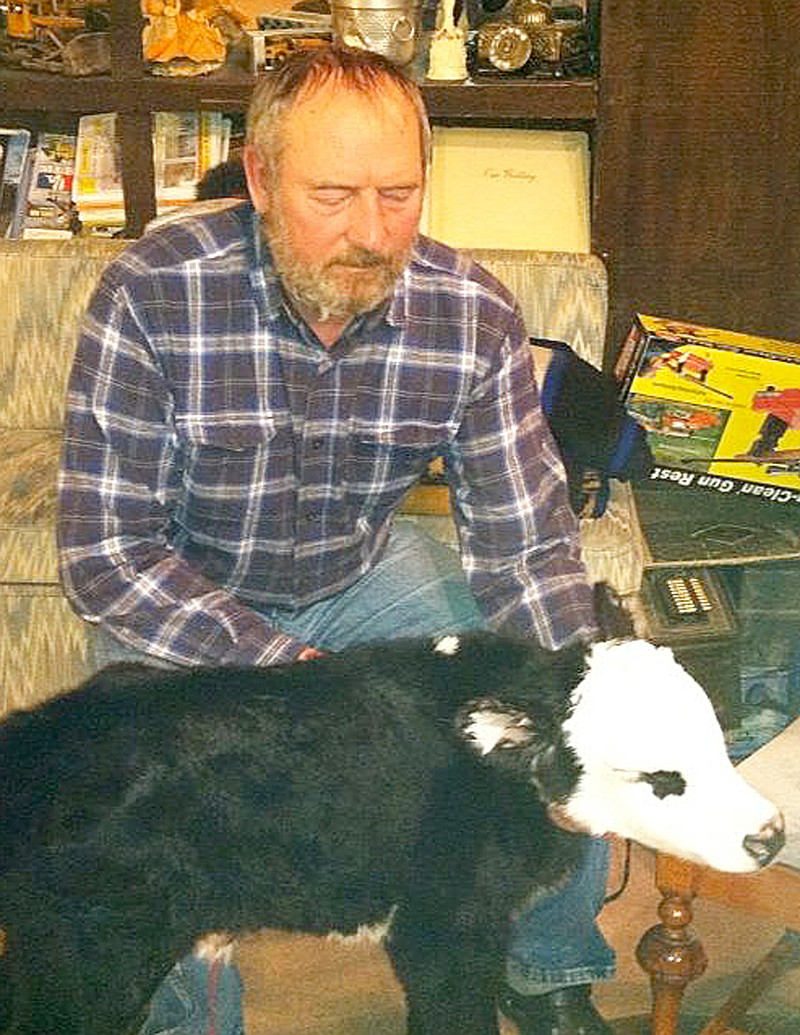Ice, snow and extremely cold temperatures as low -5º with a windchill of -20º prompted farmers to feed more hay, break ice on ponds and sometimes, bring animals inside.
Farmers braved the cold to put out extra hay for cattle, both to increase their body temperature and to provide a place to lie on in the snow-covered pastures.
Lonnie and Sharon Barnett of Gateway had two calves born this week, both of which had to be brought inside to warm up.
"When they get so cold, they're too weak to eat," Sharon said. "If the mama can't get it licked off and dried, it'll freeze."
The Barnetts took two calves inside to warm them up and feed them. Sharon said they were trying to get them to nurse from their mothers Tuesday morning.
"This is really cold," she said, adding that the ice on their farm pond was as much as six inches deep.
"We found another baby tonight," Sharon posted on Facebook Monday. She said the calf was wet and cold when she and Lonnie found him. She dried him with a hair dryer and warmed him at the fireplace. "He was too weak to suck from his mama so we got colostrum down him and he is doing good," she said. "It was 2 degrees; she had him in the snow, not where the hay was out."
Dr. Karen Sherman at Oak View Animal Hospital said she has seen one dog that died-- frozen to death -- this week because, although it had shelter, it did not have bedding. She had another dog that did not have a sufficient supply of water to drink.
"A newborn calf can freeze to death within 30 minutes," Sherman said, adding that it is essential to provide a sheltered, insulated place for outdoor animals to get out of the wind and to continually check that there is water to drink. She said feeding animals extra food helps increase body heat. Sherman said one area farmer had a newborn calf born near a pond, but he was able to save it. She said she has seen several dogs with irritation on their paws from the ice melt chemical.
At Pea Ridge Veterinary Clinic, there have been several dogs and horses come in with cut paws or hooves from the ice and a dog with chemical burns to his paws from the salt.
Both veterinarians recommend cleaning dogs' paws if they are exposed to chemicals used to melt ice.
"This is a farmer's life," Barnett said of the extra care provided to the animals during the winter freeze.
General News on 01/08/2014
